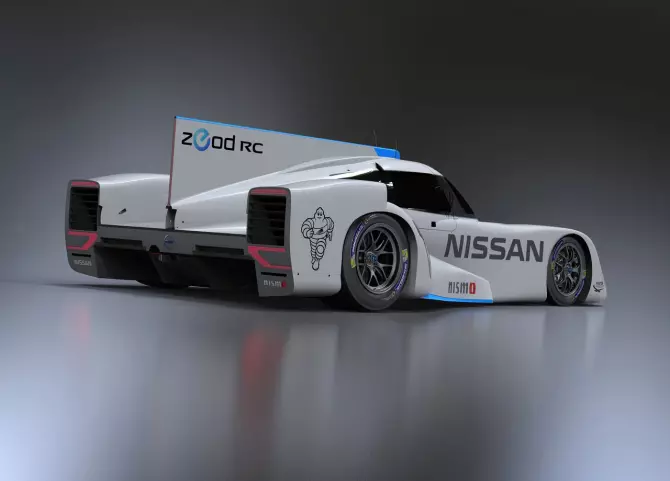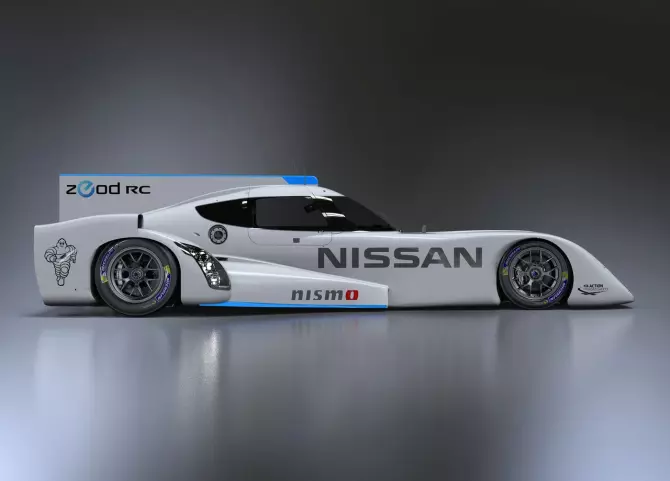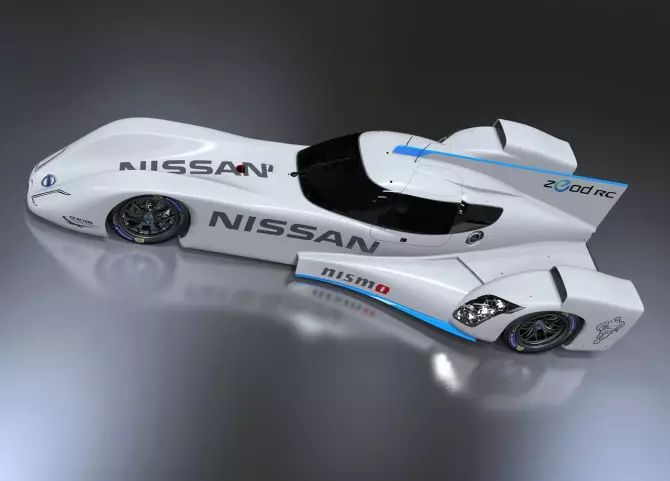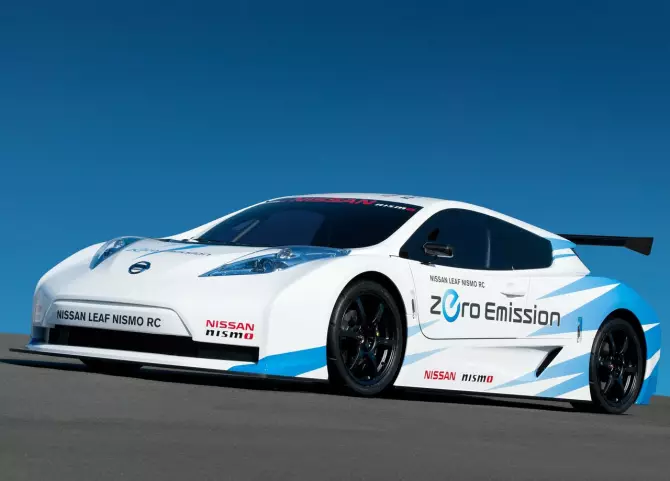Nissan unveiled the ZEOD RC, which is destined to race at Le Mans 24hrs in 2014, making it the first competition car capable of running a lap of the Le Mans circuit with only electric propulsion.
Revolution may be the best word to define the Nissan ZEOD RC, but it is effectively the second chapter of a revolution initiated by the DeltaWing project in 2009.
Originally designed as a competing proposal for the future of Indycar, after not having been the chosen proposal, the project took another direction towards endurance championships. Its unique design in hang gliding, responded to the parameters required by Indycar in the search for new solutions to boost efficiency.

In the final solution, we find similarities more easily with the world of aviation than with a conventional competition car. Instead of resorting to "mega-wings" and spoilers to create downforce, the final shape lets the bottom of the car generate all the necessary downforce.
The DeltaWing's radical design reflects in part what is happening in the automobile industry, with the latter becoming less and less friction-friendly, losing kilos from generation to generation, and exchanging many cubic centimeters for small supercharged engines, and with it, achieving the required efficiency.
Putting all these ingredients together, we got a racing car as fast or faster than the Indycars it wanted to replace, but using half the fuel and tires.

Nissan later enters the development of this project as a partner, supplying the engine of the DeltaWing that would reach Le Mans in 2012. A small 4 cylinder supercharged with just 1.6 liters delivering 300hp. Skepticism was high, given its contained dimensions, lack of aerodynamic apparatus and modest numbers of horses. But when it started to run, it was found to be fast, even very fast, with the capacity to keep up with the much more powerful prototypes in the LMP2 category.
Unfortunately, during the race, the Toyota #7 ended up having an immediate encounter with the DeltaWing, having covered only 75 laps. He was happiest in the 2012 edition of the Petit Le Mans race, at the Road Atlanta circuit, achieving a phenomenal 5th place absolute, well within LMP2 territory, just 6 laps from the first place (about 394 laps in total by the first ranked).
In 2013, Nissan surprised by announcing the abandonment of its partnership with DeltaWing, causing a lot of doubts and criticism, given the excellent publicity and fascination that DeltaWing had generated, in addition to all the innovative aspect of this project.

Now you understand why. The ZEOD RC is Nissan's DeltaWing. Which has already given rise to a lawsuit by DeltaWing, of course.
Like the DeltaWing, the Nissan ZEOD RC retains the 1.6 Turbo engine, but is accompanied by two electric motors. In other words, it is a hybrid, but with some peculiarities. Pilots are free to choose whether they want to be powered by electric motors or else in conjunction with the internal combustion engine.

With technology derived from that used in the Nissan Leaf Nismo RC, including the regenerative braking system, over 11 laps and considering the 55 braking points they imply, Nissan claims that the Nissan ZEOD RC will be able to store enough energy to achieve a full lap to the Le Mans circuit only using electric propulsion, even implying the 300km/h that should be reached on the Mulsanne straight.

The Nissan ZEOD RC is expected to be faster than LMGTE-class machines. Given the experimental nature of the ZEOD RC, and as is tradition at Le Mans, it will stay in Garage 56, reserved for vehicles that bring new technologies to the circuits, just as happened with the DeltaWing in 2012.
Nissan claims that the Nissan ZEOD RC will allow it to serve as a laboratory to test new technologies for Nissan's future entry into the LMP1 category. It will undoubtedly be the best place to test the limits of all the technology integrated in the Nissan ZEOD RC, and which will certainly influence the next generation of electric cars from Nissan, which has the Leaf as its standard-bearer. And shouldn't that be the aim of motor racing? Experimenting and testing new solutions that can “contaminate” everyday cars, making them better?
